Home > Artist on Focus
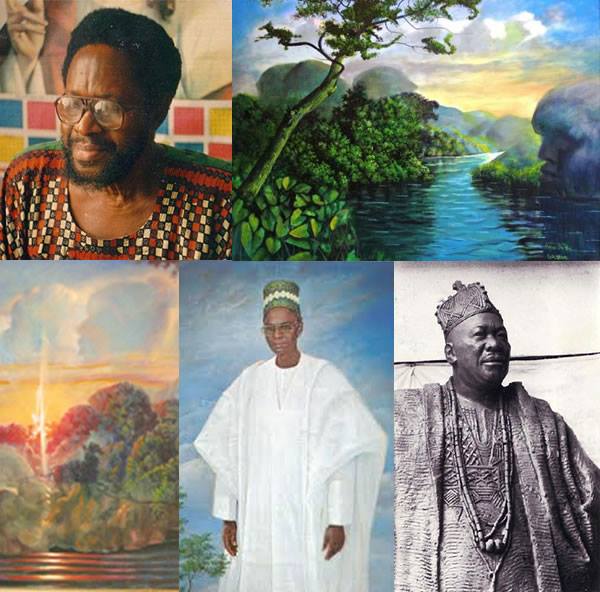
Abayomi Barber is widely considered as a foremost Nigerian “Master”. As a painter and sculptor, Barber has created some of the most iconic pieces in Nigerian art. His works can be found in monumental collections internationally. Barber worked as an art teacher at the university of Lagos for many years and mentored an entire new generation of great Nigerian artists.
Abayomi Adebayo Barber is a Nigerian contemporary artist, widely considered as a foremost Nigerian “Master”. As a painter and sculptor, Barber has created some of the most iconic pieces in Nigerian art. He is the mentor of the Abayomi Barber Art School in Lagos, Nigeria. He is best known for the application of naturalism and surrealism methods in his art works. Some of his signature works includes life sized busts of former Nigerian president, Murtala Mohammed and the former Oba of Ile-Ife, Adesoji Aderemi, another famous work is an oil painting of Shehu Shagari.
Barber was born on October 23, 1928 in Ile-Ife to the family of Samuel Bamidele and Victoria Waleola Barber. He started his education at St Peter's Anglican School, Iremo, Ife, however, he was not pleased with going to school and thereafter attended various schools in Ife; he finished his education at St Stephen's School, Modakeke, Ife in 1948. In 1949, he produced a carving on a wooden box and then participated in various art competitions during the same year. He gained recognition in Lagos when he won the Elder Dempster sponsored Lines Silver Cup for the best painting exhibited at the All Nigeria Festival of the Arts in 1952. After the prize, he was commissisioned to create a portrait of Harold Cooper, the outgoing Ikoyi club president. He found employment in Lagos in the early 1950s, as a graphic artist producing book and advertisement illustrations and comic drawings for the Nigerian advertiser located in Yaba, Lagos. In 1955, he briefly enrolled in a sculptor program at Yaba College of Technology under the direction of British sculptor Paul Mount. In 1957, he was introduced to Awolowo, then the premier of the Western Nigeria region by his uncle, Adesoji Aderemi; with Awolowo's contacts, he joined the Yoruba Historical Research Scheme on a research project tracing the origin of the Yoruba people. His work as a project assistant in the research scheme gave him the opportunity to work with notable scholars such as Saburi Biobaku, William Fagg, Frank Willet and Dr Bradburty. From 1960 to 1962, with a scholarship from the regional government, he studied at the Central School of Arts and Crafts, London. He went to London to study the preservation and restoration of antiquities and to work on developing a stature of Obafemi Awolowo. However, a regional crisis engulfed the region and his scholarship was terminated. While in England, he continued to develop his craft, he studied casting and molding at Mancini and Tozer studios, London, he also worked as an assistant at an art studio owned by Edward Delaney and later at Oscar Nemon's studio in St James studio in London. He worked with Lemon on five sculptors of Winston Churchill. He was also an assistant at the British Museum. He returned to Nigeria in 1971 and was employed as an arts fellow at the School of African And Asian Studies now known as the Center for Cultural Studies, University of Lagos. He was commissioned to paint a portrait of the visiting Ethiopian leader, Haile Selassie in 1972. When he returned to Nigeria, Barber was not pleased with what he viewed as the primitivism and expressionism that dominated the Nigerian art scene at the time. He believed that authentic creativity in the work of a genuine artist comes only through attention to skill and materials and sincerity of practice. He started an informal training school in 1973, with Muri Adejimi as his first student in his studio at the university.
Barber had his first solo exhibition in 1989, the title of the exhibition was Abayomi Barber A Retrospective. Some of his works on display at the National Gallery of Modern Art includes sculptors of Ali Maigoro and Yemoja.
Abayomi Barber

Abayomi Barber is widely considered as a foremost Nigerian “Master”. As a painter and sculptor, Barber has created some of the most iconic pieces in Nigerian art. His works can be found in monumental collections internationally. Barber worked as an art teacher at the university of Lagos for many years and mentored an entire new generation of great Nigerian artists.
Abayomi Adebayo Barber is a Nigerian contemporary artist, widely considered as a foremost Nigerian “Master”. As a painter and sculptor, Barber has created some of the most iconic pieces in Nigerian art. He is the mentor of the Abayomi Barber Art School in Lagos, Nigeria. He is best known for the application of naturalism and surrealism methods in his art works. Some of his signature works includes life sized busts of former Nigerian president, Murtala Mohammed and the former Oba of Ile-Ife, Adesoji Aderemi, another famous work is an oil painting of Shehu Shagari.
Barber was born on October 23, 1928 in Ile-Ife to the family of Samuel Bamidele and Victoria Waleola Barber. He started his education at St Peter's Anglican School, Iremo, Ife, however, he was not pleased with going to school and thereafter attended various schools in Ife; he finished his education at St Stephen's School, Modakeke, Ife in 1948. In 1949, he produced a carving on a wooden box and then participated in various art competitions during the same year. He gained recognition in Lagos when he won the Elder Dempster sponsored Lines Silver Cup for the best painting exhibited at the All Nigeria Festival of the Arts in 1952. After the prize, he was commissisioned to create a portrait of Harold Cooper, the outgoing Ikoyi club president. He found employment in Lagos in the early 1950s, as a graphic artist producing book and advertisement illustrations and comic drawings for the Nigerian advertiser located in Yaba, Lagos. In 1955, he briefly enrolled in a sculptor program at Yaba College of Technology under the direction of British sculptor Paul Mount. In 1957, he was introduced to Awolowo, then the premier of the Western Nigeria region by his uncle, Adesoji Aderemi; with Awolowo's contacts, he joined the Yoruba Historical Research Scheme on a research project tracing the origin of the Yoruba people. His work as a project assistant in the research scheme gave him the opportunity to work with notable scholars such as Saburi Biobaku, William Fagg, Frank Willet and Dr Bradburty. From 1960 to 1962, with a scholarship from the regional government, he studied at the Central School of Arts and Crafts, London. He went to London to study the preservation and restoration of antiquities and to work on developing a stature of Obafemi Awolowo. However, a regional crisis engulfed the region and his scholarship was terminated. While in England, he continued to develop his craft, he studied casting and molding at Mancini and Tozer studios, London, he also worked as an assistant at an art studio owned by Edward Delaney and later at Oscar Nemon's studio in St James studio in London. He worked with Lemon on five sculptors of Winston Churchill. He was also an assistant at the British Museum. He returned to Nigeria in 1971 and was employed as an arts fellow at the School of African And Asian Studies now known as the Center for Cultural Studies, University of Lagos. He was commissioned to paint a portrait of the visiting Ethiopian leader, Haile Selassie in 1972. When he returned to Nigeria, Barber was not pleased with what he viewed as the primitivism and expressionism that dominated the Nigerian art scene at the time. He believed that authentic creativity in the work of a genuine artist comes only through attention to skill and materials and sincerity of practice. He started an informal training school in 1973, with Muri Adejimi as his first student in his studio at the university.
Barber had his first solo exhibition in 1989, the title of the exhibition was Abayomi Barber A Retrospective. Some of his works on display at the National Gallery of Modern Art includes sculptors of Ali Maigoro and Yemoja.
Artist on Focus
Ato Arinze
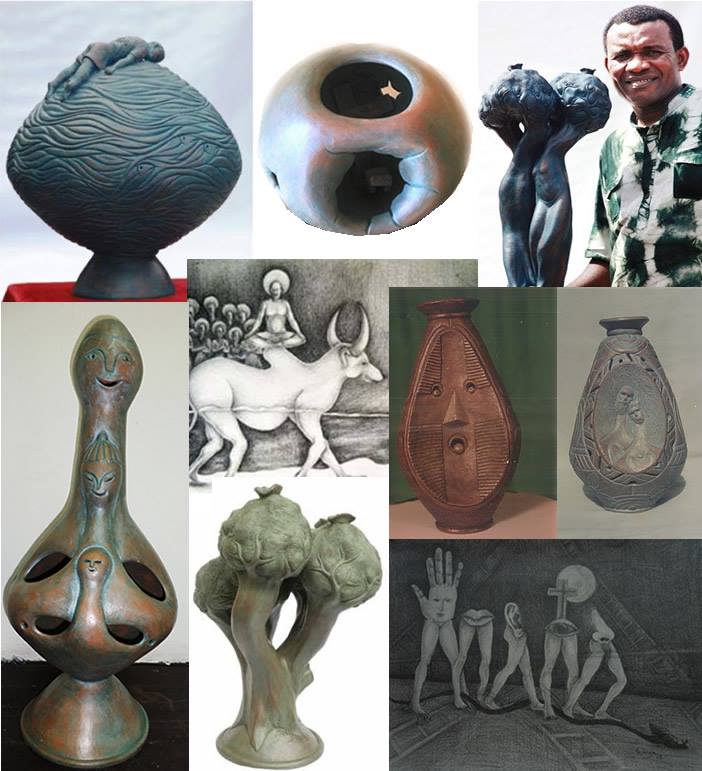
Ato Arinze had been an independent studio artist since 1991, practicing as a sculptor and a potter with special interest in ato's pictureportrait sculptures and statues. His grasp for forms attest to ...
[Continue reading]
El Anatsui
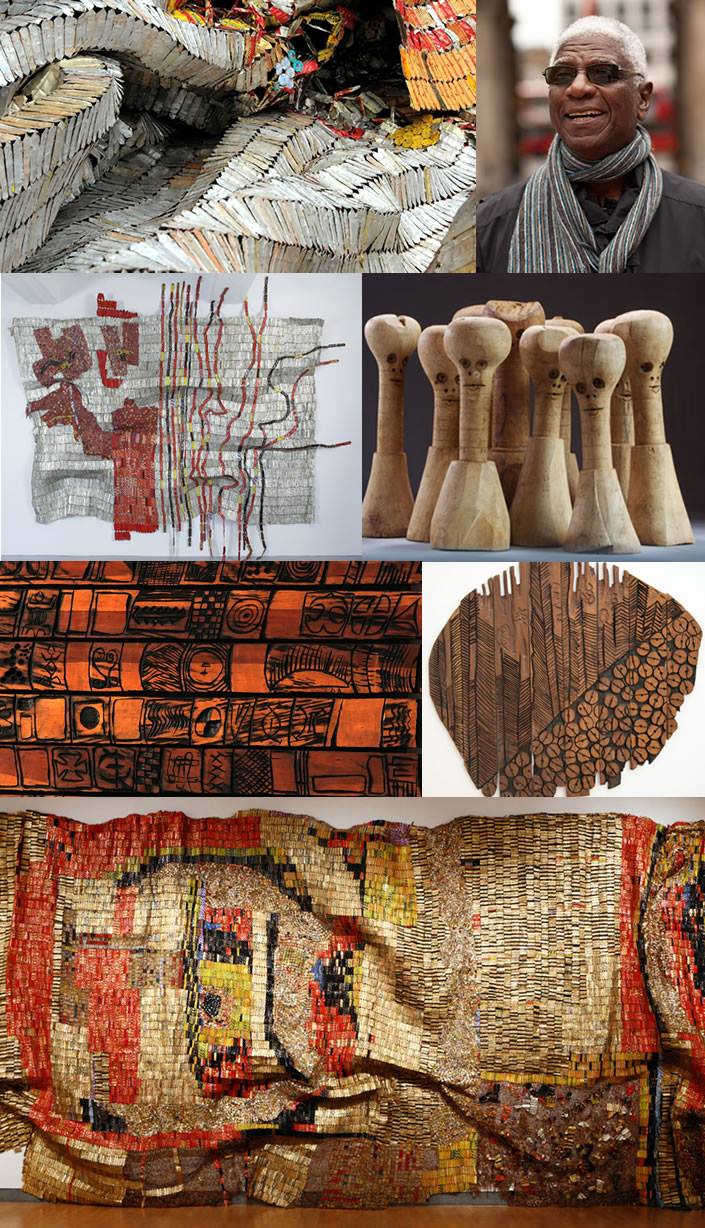
El Anatsui was born in Anyanko, Ghana in 1944. He is an internationally acclaimed artist who transforms simple materials into complex assemblages that create distinctive visual impact. Many of Anatsui...
[Continue reading]
Nnenna Okore
Born in Australia, 1975 and raised in Nigeria, Nnenna Okore has received international acclaim for her richly-textured sculptural forms and installations. She reconfigures organic or discarded materia...
[Continue reading]
Tola Wewe
Tola Wewe, born in Okitipupa, Ondo State, Nigeria in 1959, trained and graduated with a degree in Fine Art from University of Ife in 1983. He then went on to obtain a Masters degree in African Visual ...
[Continue reading]
George Edozie
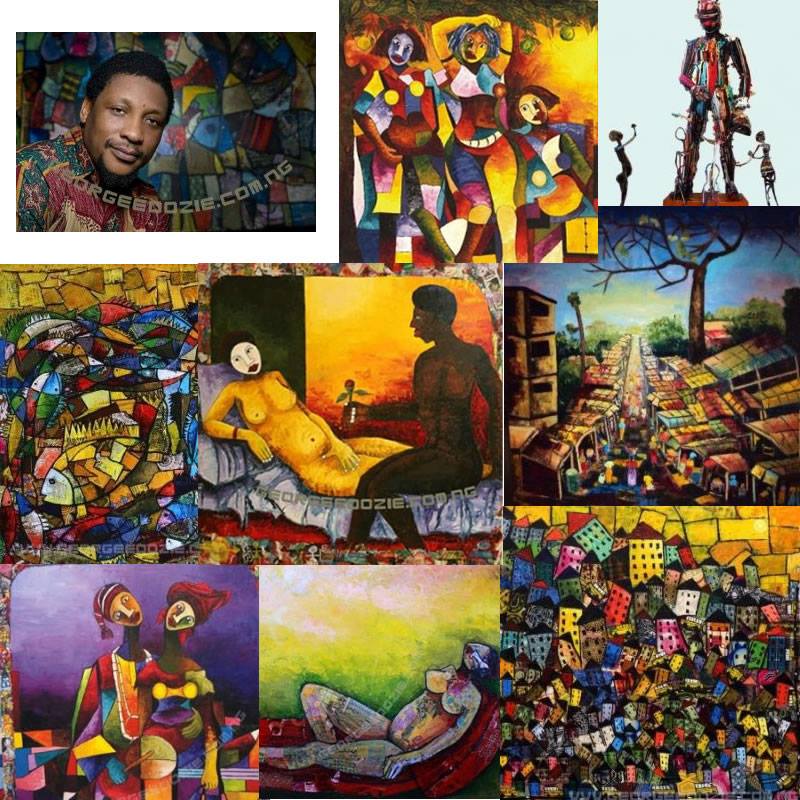
George Edozie was born on the 11th of May 1972 in Enugu state Nigeria. He studied Fine and Applied Arts at the University of Benin where he majored in Painting. BA (Hons Fine and Applied Arts) graduat...
[Continue reading]
Dr Moyo Okediji
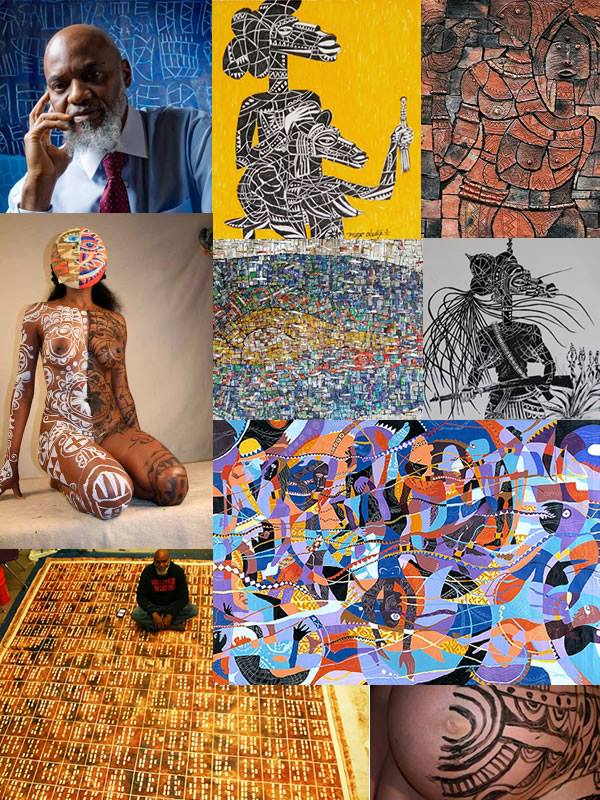
Moyo Okediji is an art historian, artist and curator whose works contains a number of icons and signifiers of the deep aspects of Yoruba culture. He was part of Ona, an art movement at Obafemi Awolowo...
[Continue reading]
Dr Kunla Filani
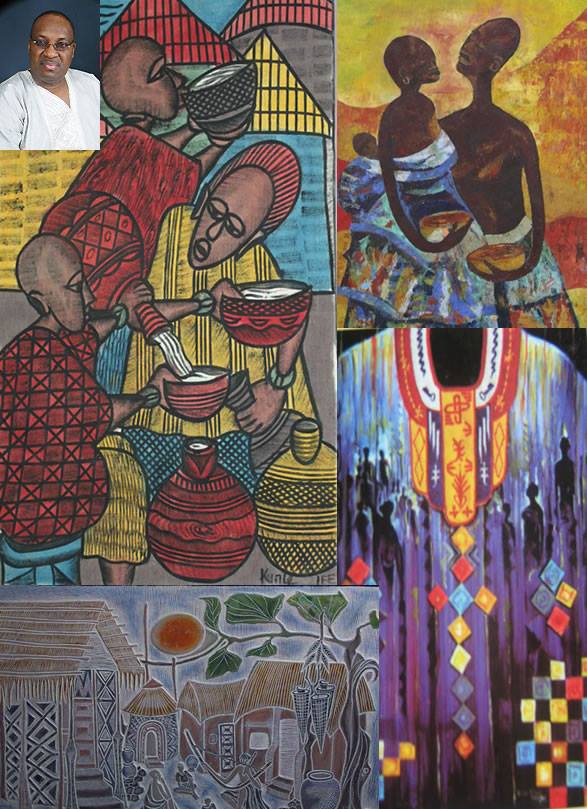
Kunle Filani (born 8 September 1957) is a Nigerian educator and artist. His works are closely identified with the school of thought named Onaism; Onaism is an art movement that is based on the fusion ...
[Continue reading]
Chinwe Chukwuogo-Roy (1952-2012)
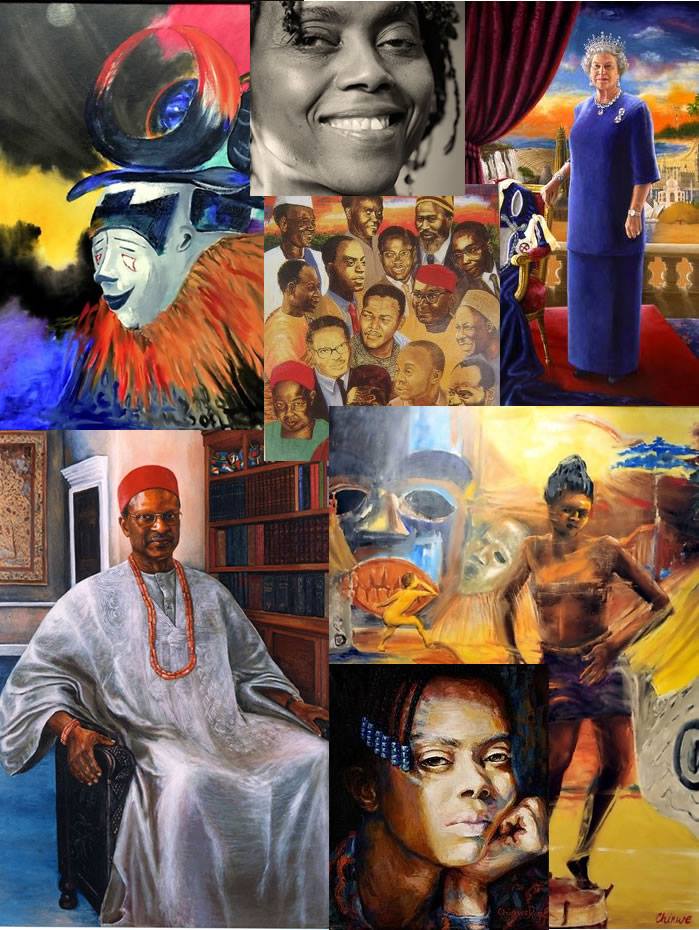
Chinwe Chukwuogo-Roy (2 May 1952−17 December 2012) creates a lasting impression on canvas as well as on those who meet her. For the fortunate ones who sit for her, her charm pervades and the intensi...
[Continue reading]
[First Page] [Prev] Page 5 of 8 [Next] [Last Page]